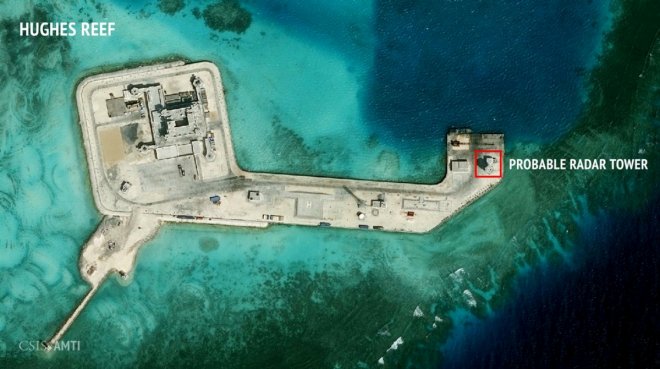
The incoming US Secretary of State Rex Tillerson dragged the South China Sea conflict to uncharted territory by saying China's access to the disputed waters "is not going to be allowed."
The US has in the past conducted air and naval patrols in the waters to preserve the right to free navigation in the South China Sea but blocking China's access to the artificial islands it built in the waters has never been considered as a viable option.
Tillerson echoed President-elect Donald Trump's stance on China's trade and currency policies during a confirmation hearing in the US Senate, but his drastic move away from the existing US policy on the sea conflict will lead to a showdown with China.
US asks China to return naval vessel seized in South China Sea
"We're going to have to send China a clear signal that, first, the island-building stops and, second, your access to those islands also is not going to be allowed," Tillerson said.
Russophile Tillerson, who ran oil giant Exxon Mobil before being picked up by Trump to lead the US foreign policy under him, even told the Senate Foreign Relations Committee that the building of military assets by China in the disputed waters was "akin to Russia's taking Crimea" from Ukraine.
Tillerson blamed the Obama administration for not doing enough to prevent China from developing military infrastructure like airstrips and missile facilities in the artificial reefs around Paracel and Spratly island chains.
"The failure of a response has allowed them just to keep pushing the envelop on this," Tillerson said, adding that China's bid to control the entire South China Sea was "extremely worrisome" and a great threat to the "entire global economy".
China ready to thwart US cruise missile strike on Spratly islands in South China Sea
The US has said weapons deployment in South China Sea threatens free passage in an area through which ship-borne trade worth $5 trillion passes every year.
US has no territorial claims in the South China Sea but it sees China's land reclamation near the island chains of Paracel and Spratlys and the building of airstrips as attempts to militarise the region.
The dispute and strategic points
The overlapping claims of sovereignty over two island chains by China, Taiwan, Malaysia, the Philippines, Vietnam and Brunei has made the South China Seas a sensitive region. The United States has strategic interests in the region as well, and it offers a counter balance against Beijing's influence in the waters.
The US adopts a stern line against China's land reclamation, construction and militarisation in these islands but China staunchly defends its claim to sovereignty in the region.
The US too has US military facilities in Southeast Asia -- Philippines and Thailand. It also has stationed its Poseidon sub-hunters and electronic warfare platforms in Malaysia and Singapore.
The mostly uninhabited islands in South China Sea are of crucial strategic importance. The two major island chains -- the Paracels and the Spratlys -- are thought to harbour natural resources around them. China hopes the oil and natural gas reserves in the region could ensure its energy security.
The sea is also a major trading route through which ship-borne trade worth $5 trillion passes every year. For energy hungry China the sea routes in South China Sea are crucial as most of its imported oil flows through these routes.
Control over the territory allows Beijing to prevent the US from expanding its sphere of influence in the region.









